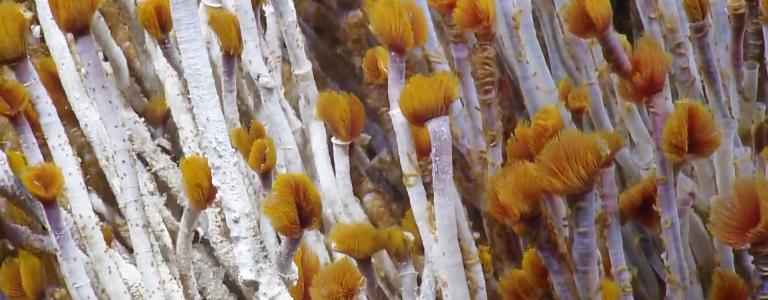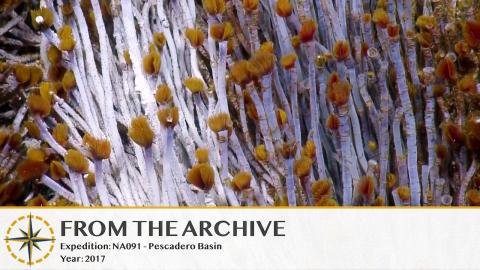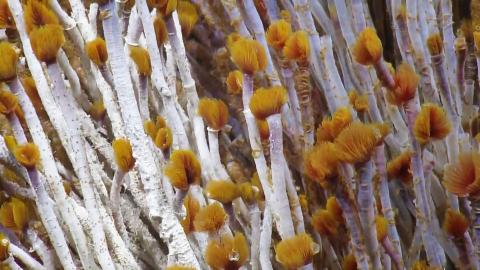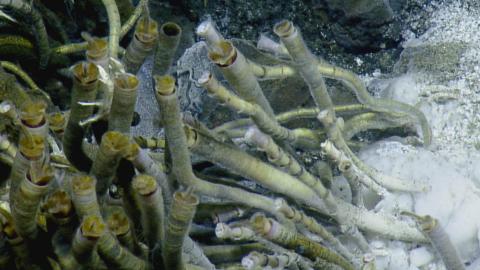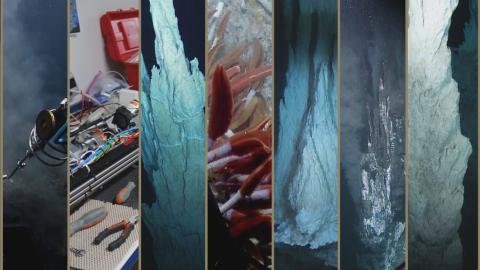In 2015, the deepest high-temperature hydrothermal vents in the Pacific Ocean were discovered in the Pescadero Basin of the Gulf of California. Initial observations revealed enigmatic aspects of this vent system, including unique mineralogical composition and fluid geochemistry, suggesting that there is much to be learned about deep ocean carbon dynamics in this system.
High-temperature hydrothermal vents at mid-ocean ridges typically produce chimneys dominated by sulfide minerals. In contrast, the Pescadero Basin vents host delicate structures composed of light colored carbonate minerals. The Pescadero Basin vents also host deep-sea biological communities thriving among carbonate chimney structures, including communities dominated by tubeworms. The striking differences between these vents and other regional hydrothermal systems offer a unique opportunity to explore the influence of tectonic setting on the nature of seafloor vent sites, the fundamental geochemical controls on biological colonization in the deep ocean, and the role of fluid venting on global-scale ocean chemistry and climate.
The main objective of this expedition will be to conduct an integrated biogeochemical exploration of the Pescadero Basin Vents. Nautilus will measure and collect vent fluid, rocks, sediment and biological samples to work to answer key questions about geologic processes, biogeochemistry, and biogeography, in the unique geological context of Pescadero Basin.
